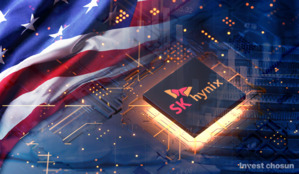“It would be better if SK Hynix did not receive subsidies” (Equity manager of a management company)
The US’ semiconductor support and science law, the so-called ‘Chips Act’ subsidy payment standards, clearly reveal the stance of keeping China in check, and attention is focused on SK Hynix’s decision, which has a relatively high proportion of sales in China. Institutional investors (hereafter referred to as institutions) are concerned that SK Hynix will suffer greater losses if it receives subsidies than Samsung Electronics, another beneficiary of subsidies.
On the 28th local time, the US Department of Commerce announced the application process and criteria for the Chips Act subsidy. As for the conditions for support, ▲national security support ▲excess profit redemption ▲manpower training ▲cooperation to resolve oversupply ▲guardrails (safety devices) were presented. The main point of the Chips Act announced in August last year is to provide a 25% tax credit (incentive) for semiconductor factories built in the United States.
In the midst of the criticism of the ‘socialist idea’ in the specified conditions, the atmosphere is still focused on the ‘guardrail clause’.
According to the guardrail clause, companies receiving tax credits or subsidies from the US government are prohibited from building or additionally investing in state-of-the-art semiconductor facilities in countries of concern, including China, for the next 10 years. With detailed guidelines related to guardrail provisions expected to be released in the future, attention is being paid to the decisions of domestic semiconductor companies, which do not have a portion of sales in China.
“The semiconductor sector is a market with a large market share in Korea, so I think there will be a breakthrough if negotiations continue,” said a manager at one management company. It appears to be,” he said.
It is pointed out that SK Hynix could suffer a significant blow when receiving subsidies. This is because China’s sales portion is relatively high. As of the third quarter of last year, SK Hynix’s share of sales in China stood at 25%, down 5% from the previous quarter, but still higher than Samsung Electronics (9.64%). While Samsung Electronics only produces NAND flashes (NAND) in China, SK Hynix is producing DRAM as well as NAND flashes in China. SK Hynix’s production in China also accounted for 25% and 46% of NAND and DRAM, respectively, as of the third quarter of last year.
Considering how to utilize the Dalian plant in China is also a burden. SK Hynix signed a contract to acquire Intel’s NAND division at the end of 2021 and also acquired a production plant in China. It has also become difficult to set up investment plans for factories in China that have been taken over following the U.S.’s containment of China’s semiconductor rise. First of all, the application of export control of semiconductor equipment to China was suspended for one year, but it is unclear whether it will be extended.
Concerns have been raised in this regard. After a conference call in the fourth quarter of last year, Samsung Securities Research Center said in a report, “The most important thing in the performance announcement, but little mentioned is the plan to utilize the Chinese plant.” It is difficult to guarantee additional licenses.”
The weakening competitiveness of SK Hynix’s products is also a concern. Normally, in the case of memory semiconductors, it is possible to maintain competitiveness in terms of technology and cost only when new process equipment is brought in and process conversion is carried out every year. After receiving the Chips Act subsidy, additional investment in factories in China will inevitably be difficult.
A researcher at a credit rating agency said, “If the grace period that expires in October is not extended, it will be impossible to replace the factory in Wuxi, China with state-of-the-art equipment. “In the short term, additional transportation and management costs may occur, and in the mid- to long-term, there are concerns about weakening competitiveness,” he said.
Some are discussing the idea that SK Hynix does not receive subsidies from the Chips Act. First of all, it is pointed out that since SK Hynix has not executed semiconductor-related investments in the United States, it will have relatively more time to decide whether to receive subsidies compared to Samsung Electronics, which has two foundry factories in the United States. SK Hynix is looking for a site for the construction of a US semiconductor plant in the first half of this year, but it is in the position that there are no concrete plans regarding the start of construction.
An official from the investment industry said, “Intel’s decision to acquire the NAND business division, which was pushed forward even with huge borrowings in addition to deteriorating performance due to a decrease in demand for memory semiconductors, is increasingly likely to be a handshake.” Since it is not, it is not a situation to be concerned about the impact on SK Group if SK Hynix does not receive subsidies, but it will not be easy to choose not to receive subsidies from the United States.”
SK Hynix said, “The conditions presented for the subsidy are under review, and there is nothing that can be revealed.”

